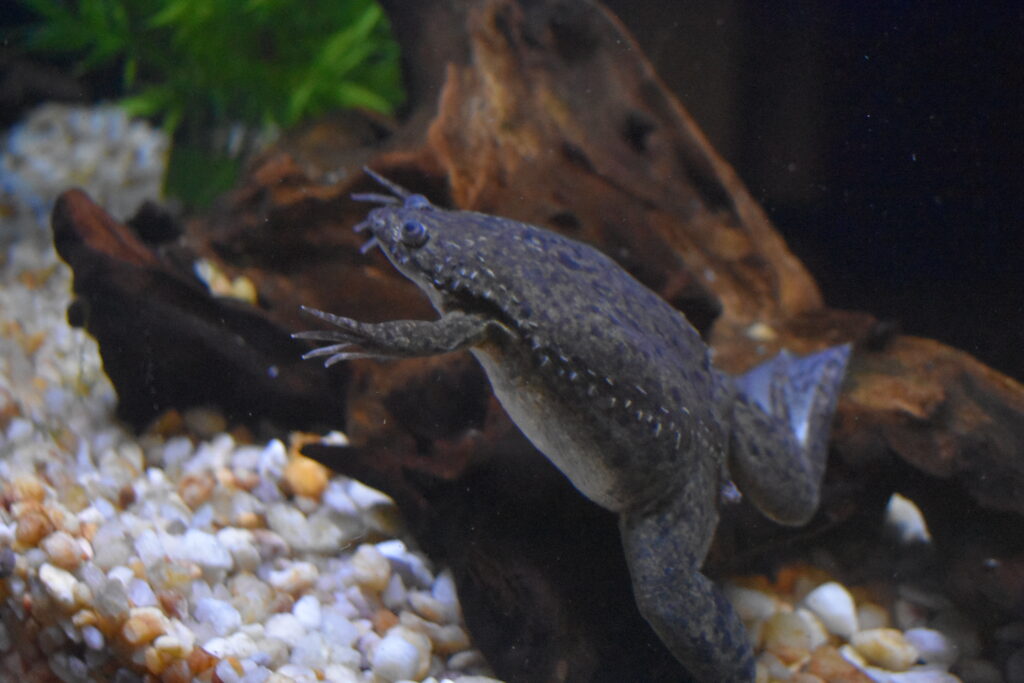African Clawed Frog
*This page is under renovation and all information may not be up-to-date or complete*
Description
African clawed frogs have flattened bodies with smaller, wedge-shaped heads. Their eyes and nostrils are positioned on top of their head. This frog’s smooth skin ranges in color from greenish-fray to brown on its back, while its underside is off-white or yellowish.
This species gets its name from their “claws” on their hind legs that are used to tear apart larger pieces of food. The three inside toes on either of their feet have cornified (dry, hard) tips, which look like claws but are not true claws. Their front limbs have small, non-webbed fingers that they use to push food into their mouths.
Like other frogs in Family Pipidae, African clawed frogs do not have a tongue or a visible ear opening.
Range & Habitat
African clawed frogs are native to warm (60-80 degrees Fahrenheit), stagnant pools and quiet streams in the African Rift Valley. This area is south of the Sahara Desert in east and southern Africa. They can also be found in South Africa, Namibia, and Angola.
African clawed frogs have also become invasive species in the United States, Chile, France, Indonesia, Portugal, the United Kingdom, and Italy by escaping or being released from research laboratories, pet stores, or home aquariums.
Behavior
Males do not have vocal cords, but they can still vocalize to attract females. They produce a clicking sound via rapid muscle movements in their throats. Females can accept or reject a male frog by either producing a rapping sound or a slow ticking sound, respectively. Mating typically occurs from early spring to late summer, but depending on location, they can mate up to four times a year.
Diet
As tadpoles, African clawed frogs eat exclusively by filter feeding. Adult frogs are scavengers with a highly varied diet. They may eat aquatic insect larvae, water insects, crustaceans, small fish, tadpoles, worms, or freshwater snails.
Conservation
African clawed frogs are considered to be species of least concern by the International Union for the Conservation of Nature (IUCN), and their populations are increasing. While this species is succeeding in the wild, it has also become invasive in many countries. This presence can negatively impact native species of amphibians, especially since African clawed frogs are known carriers of chytridiomycosis. This fungal disease is fatal to many other frog species. Chytrid fungus causes damage to the keratin layer of a frog’s skin, impairing their ability to breathe properly, regulate their body temperature, and control their electrolyte balance.
Fun Facts
- The African clawed frog’s skin produces antimicrobial proteins called magainins, which protect them from bacteria, fungi, and protists in the stagnant bodies of water where they live.
- If a pond with African clawed frogs dries up, then they will burrow in the mud where they can lay dormant for up to one year.
- The African clawed frog was the first vertebrate species to be cloned in 1962 by developmental biologist Sir John Gurdon.

Scientific Name
Xenopus laevis
IUCN Conservation Status
Least Concern
Size
Males: 2 – 2.5 inches long
Females: 4 – 4.5 inches long
Life Expectancy
Up to 15 years